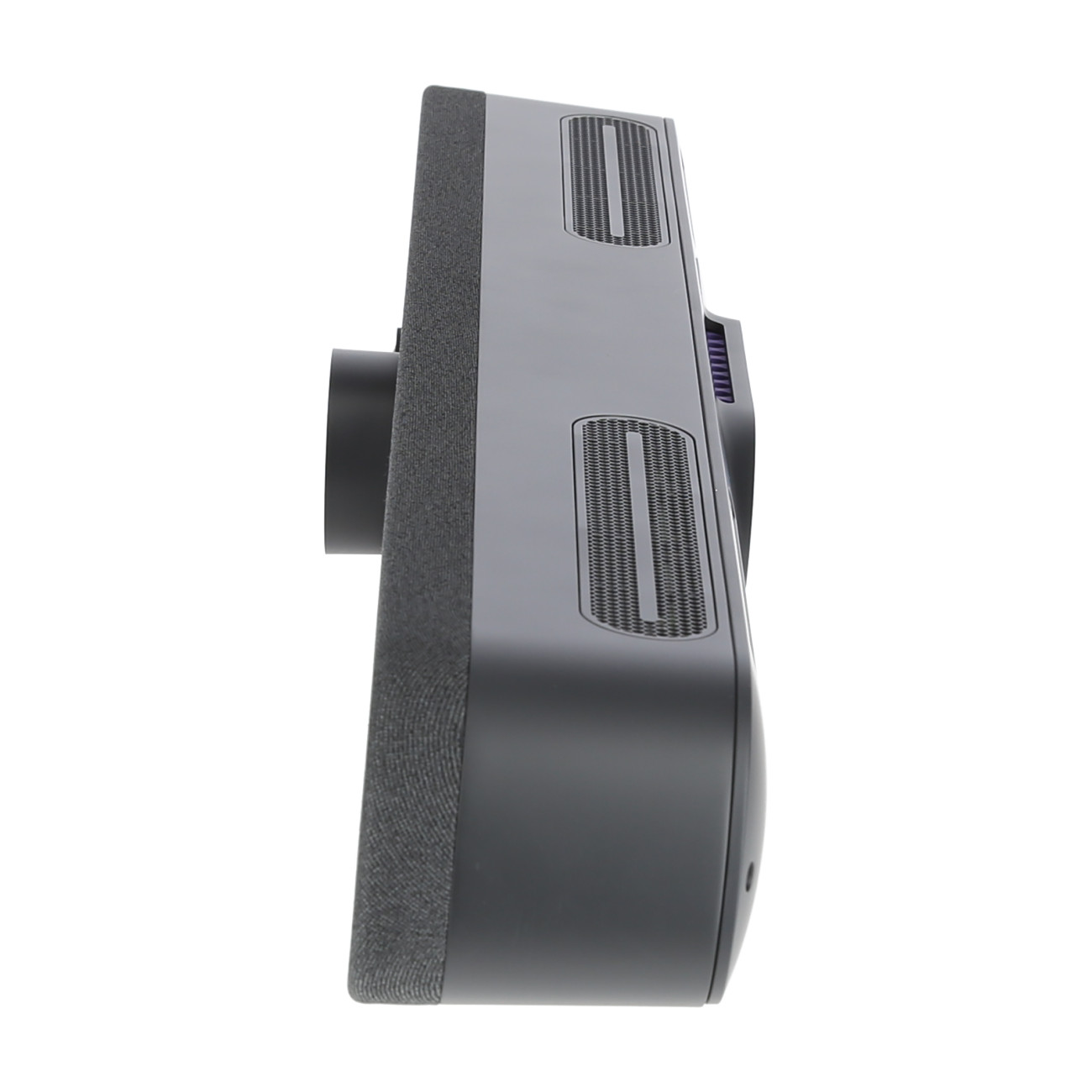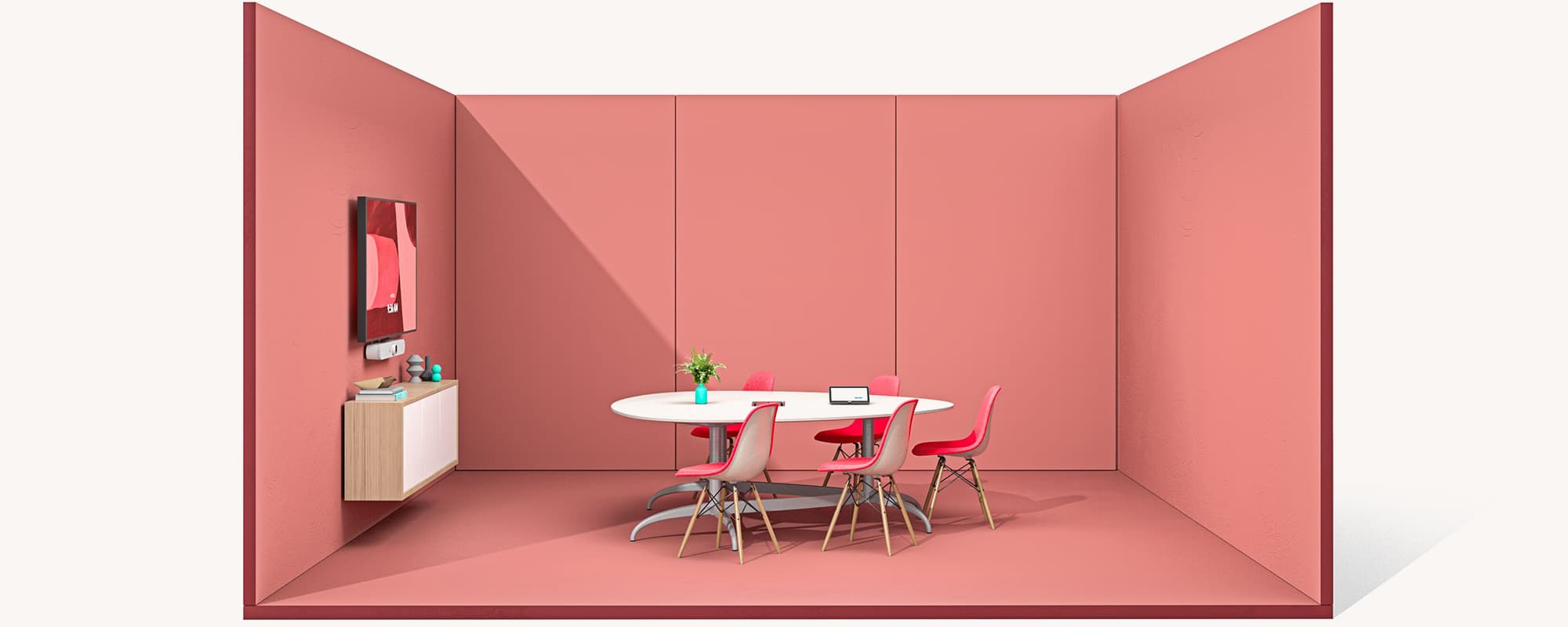







































£1,711.99*
- Resolution 3840 x 2160 4K UHD
- Camera resolution 8.3 MP
- Field of view 120°


visunext Services
Frequently purchased together
Product information
All in view
With a dual camera system and RightSight 2 autoframing technology, Rally Bar manages to keep distant participants in the conversation as if they were there. Choose Grid View to avoid blank spaces and frame each person in a separate stream, Speaker View to highlight the person speaking, or Group View to capture everyone in the room.
Experience the following highlights:
- Razor-sharp images with resolutions up to 4K.
- AI viewfinder for stable room view and people counting
- Motorised pan and tilt with RightSight2 autoframing
- Adaptive beamforming microphones
- High-performance speakers
Find out here which Logitech video conference system suits your room!
Looks True-To-Life
An innovative dual camera system with optical zoom and an AI viewfinder provides uninterrupted, cinematic video in small and medium sized rooms.

Great sound
Rally Bar Mini's advanced audio features deliver powerful, room-filling sound, ensuring every voice is heard clearly.

AI sound optimisation
Automatically balance loud and soft voices - while suppressing unwanted noise - with AI-based RightSound technology that improves over time.
Extend the range of conversation
Suitable for use in larger rooms with Rally Mic Pods. The Rally Bar Mini has a recording range of up to 7 m, which can be significantly extended with up to three Mic Pods.

Designed for scalability
Appliance mode
Run supported video conferencing applications - such as Zoom®, Microsoft Teams®, Google Meet® and others - directly on the appliance, without the need for a computer or laptop.
USB mode
Connect via USB to virtually any PC or Mac without the need for additional software.
Cable management
Keep installations clean and reliable with secure cable routing and minimal cabling.
Mounting options
Rally Bar Mini mounts in a variety of ways, making it quick and easy to deploy in all your small meeting rooms.
Works with your preferred platform
Start your meeting with just one touch and seamlessly connect Rally Bar Mini to your pre-configured room solution.

Easy to manage
Logitech Sync makes managing Logitech Video Collaboration devices a breeze. Monitor room health, provide updates and change settings - all from a single cloud-based platform. Sync Insights also gives you long-term insight into how your meeting rooms are being used.

Technical data
| Name | Logitech Rally Bar Mini Conference Camera, 3840 x 2160 4K UHD, 8.3 MP, 30 fps, 120° |
|---|---|
| Article number | 1000018159 |
| GTIN/EAN | 5099206093089 |
| Manufacturer SKU | 960-001339 |
| Model name | Rally Bar Mini |
| Brand | Logitech |
| Product Type | Conference Camera |
| Application | Medium Rooms |
| Resolution | 3840 x 2160 4K UHD |
| Frames per Second | 30 fps |
| Focus type | Manual & automatic focus |
| Digital Zoom | 4 |
| Camera resolution | 8.3 MP |
| Field of view | 120° |
| Inputs | 1x HDMI , 1x USB-C , 3x USB-A |
| Outputs | 2x HDMI |
| wireless technology | WiFi |
| Features | Microsoft Teams , Zoom , google_meet |
| Product width | 71.9 cm |
| Product height | 9.14 cm |
| Product depth | 10.1 cm |
| Weight | 4.03 kg |
| Colour | Grey |
| Delivery contents | HDMI Cable , Lens cap , Logitech Rally Bar Mini , Power cable , Remote control , USB cable |
| Condition | New |
| Warranty | 24 Month |
| Warranty type | Bringin service Service and support information |
Product safety
| Company |
|---|
| Logitech |
| EPFL - Quartier de l'Innovation, Daniel Borel Innovation Center |
| 1015 Lausanne |
| Switzerland |
| info@logitechg.de |









